Top 10 Chinese Calligraphy Brushes: The Ultimate Guide to Selection and Care
Qiming’s note: I originally planned to buy a couple of calligraphy brushes online when I discovered a store claiming to be among China’s top ten brush brands. This sparked my curiosity – does such a traditional and somewhat niche product even have established brands? After searching specifically, I found someone had actually provided a detailed answer about the top brush brands in China. Below, I’ve compiled these top ten Chinese calligraphy brush brands (in no particular order) along with expert methods for selecting and maintaining your brushes. This guide aims to help calligraphy enthusiasts find the perfect brush for their practice.
Top 10 Chinese Calligraphy Brush Brands
- “Qianjin”(千金) Hu Brush from Huzhou City, Zhejiang Province
- “Nonggeng”(农耕) Brushes by the Zou Family from Wengang, Jiangxi Province
- “Tiger Brand”(虎牌) Brushes from the Old Zhou Huchen Brush Factory in Shanghai
- “Zhilan Tu” (芝兰图)Brushes from Shao Zhiyan Brush Shop in Hangzhou, Zhejiang Province
- “Double Sheep”(双羊) Hu Brushes from Shanlian Hu Brush Factory in Huzhou, Zhejiang Province
- “Longquan” Calligraphy Brushes from Jiangdu, Yangzhou, Jiangsu Province
- “Golden Tripod” (龙泉)Brushes from Suzhou, Jiangsu Province
- “Wu Jingsheng” (武京生)Brushes from Beijing
- “Lake Sheep” (湖羊)Brushes from Jinjiata Hu Brush Factory in Lianshi Town, Huzhou, Zhejiang Province
- “Three Rabbits” (三兔)Xuan Brushes from Xuan Brush Factory in Jingxian County, Anhui Province
Note for Beginners: If you’re just starting your calligraphy journey and looking to purchase all your supplies (brushes, ink, paper, and inkstone) together, consider checking out Qi Ming Wen Fang – a trusted 10-year-old brush shop with excellent customer retention.Our products are available on Amazon – simply search for our brand name there.
Professional Chinese Calligraphy Set
How to Select the Perfect Chinese Calligraphy Brush
Choosing the right brush is crucial to your calligraphy practice – it’s like a first important meeting that could lead to a lifelong relationship with the art. If the feeling is right, you’ll develop a lasting connection with calligraphy; if not, you might miss out on this beautiful tradition.
Most calligraphy enthusiasts purchase brushes either from physical stores or online. Based on my experience and analysis, the traditional “Four Virtues” principles of brush selection are practically impossible to verify before purchasing:
- Pointed – The brush tip should gather to a fine point
- Rounded – The brush belly should be full and rounded
- Resilient – The hairs should have good spring and elasticity
- Even – The brush hairs should be uniform and well-balanced
Visual inspection alone isn’t reliable for verifying these qualities. There’s only one reliable solution: invest in quality brushes. Avoid purchasing from physical stores where many shopkeepers lack expertise about the products and often stock inferior brushes at inflated prices (markups of 300-500% are common). Online shopping is generally a better option.
A reputable online brush store should provide comprehensive descriptions of their products, including:
- Brush tip material
- Handle material
- Exposed tip length
- Suitable calligraphy styles and uses
The best online retailers will also include sample writing images demonstrating the brush’s performance.
Based on 2011 pricing standards, brushes over RMB 20 yuan were considered decent quality. (Qiming’s note: It’s now 2025, and prices have increased significantly several times since 2011, so adjust this price reference accordingly.) I generally recommend purchasing two brushes of different specifications or with different tip materials for versatility.
Pure sheep hair or wolf hair brushes should be approached with caution. True top-quality pure animal hair brushes would cost no less than 200 yuan each, as hair from the correct parts of the animal is extremely expensive. Currently, about 90% of modern calligraphy brushes use mixed-hair compositions, primarily incorporating:
- Animal hair
- Synthetic fibers
- Hemp
- Pig bristles
Synthetic hair offers excellent value – inexpensive while adding resilience. However, brushes made purely of synthetic materials won’t perform adequately for serious calligraphy practice, which is why animal hair must be included in the composition.
How to Distinguish Quality Calligraphy Brushes
The ideal brush handle should measure between 0.7-1cm in diameter – neither too thick nor too thin. Avoid selecting brushes solely based on attractive handles that feel heavy or appear luxurious. Remember that calligraphy is performed with the brush hair, not the handle. Ornate handles often compensate for inferior brush hair quality or poor craftsmanship.
After acquiring a new brush, prepare it properly and test its performance. Beyond the “Four Virtues,” a quality brush exhibits these characteristics:
- Firm bristles that aren’t excessively rigid
- Soft bristles that maintain adequate structure
- Balanced responsiveness to pressure
Finding the perfect brush for your personal style requires patience and can involve some investment. The traditional approach is to develop a relationship with a skilled brush craftsman. (Qiming’s note: Finding a dedicated brush craftsman may be challenging for most practitioners. I have my brushes custom-made, and if you trust my expertise, consider trying brushes from Qi Ming Wen Fang.)
The difference between superior and inferior brushes becomes increasingly apparent as you develop your calligraphy skills. As your technique and sensitivity improve, you’ll better appreciate a quality instrument and naturally create more refined characters. Conversely, advanced practitioners can produce impressive work even with basic tools, though this requires significantly more skill.
My recommendation for beginners: start with a reliable mixed-hair brush of decent quality – never sacrifice quality for price. As you progress, select brushes that complement your personal style and writing characteristics.
Professional Tips for Using and Maintaining Chinese Calligraphy Brushes
1. Properly Preparing a New Brush
Before first use, soak your new brush tip in warm water for 5-10 minutes. (Qiming’s note: This doesn’t mean simply leaving it unattended in water. Hold the brush and gently stir it to thoroughly moisten the hairs. Avoid soaking the handle junction as this can cause cracking, especially with brushes containing high percentages of animal hair. Handle material quality is also a significant factor.)
For optimal results, I recommend fully opening the brush. Many beginners prefer partially opening the brush, believing it offers better control, but this approach is counterproductive – if you need a smaller brush surface, simply purchase a smaller brush.
New brushes typically have loose hairs that need removal. After the brush tip naturally opens in water, gently rinse it to remove any loose hairs, then carefully squeeze out excess water. For best results, dry the brush tip on absorbent xuan paper before dipping in ink.
Some calligraphers fully open small brushes to practice large characters. While this technique may make controlling strokes initially easier, it doesn’t develop the varied writing techniques necessary for advancement. Additionally, the brush tip becomes difficult to gather after being pressed open, causing premature wear.
Others prefer using fully opened large brushes for small character practice. Although this approach uses a substantial tool for delicate work, it effectively develops precise brush control skills. Remember: large brushes can adapt to small characters without damage, but small brushes should never be forced to create large characters as this causes excessive wear and poor results.
Below is my proven method for preparing new calligraphy brushes:

1.Prepare a small bowl of water – warm water in winter (slightly warm to the touch), room temperature water in summer

2.Submerge the entire brush tip in the water

3.To accelerate the opening process, apply slight pressure against the bowl bottom

4.Remove the brush, gently twist open the hairs to release manufacturing glue

5.Return to water, again applying gentle pressure

6.Repeat until the brush fully opens and all glue residue is removed
Blot excess water with absorbent paper before using with ink
2. Proper Brush Technique for Longevity
When loading ink, always follow the natural direction of the bristles. Dipping horizontally or diagonally disrupts the brush structure, compromises writing quality, and significantly shortens the brush’s useful life.
When dipping ink:
- Hold the brush at an angle, not completely vertical
- Use a light touch
- Ensure the brush tip receives ink evenly on all sides
- Maintain a properly shaped tip – straight, round, and pointed
3. Essential Cleaning Practices
Clean ink from your brush immediately after each use. Thorough cleaning is essential – remove as much ink as possible, then gently squeeze out excess water. Reshape the brush tip to its original form and hang it to dry in a well-ventilated location.
(Qiming’s note: Never replace the protective brush cap on a cleaned brush. After a brush has been opened for use, the cap should be permanently set aside. Replacing the cap can cause the brush tip to become misshapen and may promote mold growth in the hairs. Instead, use a proper brush hanger or rack until the brush is completely dry, after which it can be stored in a brush roll or other appropriate storage container.)

Clean brushes should always be hung to dry vertically, with the tip pointing downward.
4. Preparing Brushes for Reuse
When reusing a brush after storage, always soak it in clean water first, then squeeze out excess water before loading with ink. A dry brush tip applied directly to ink creates hollow sections in the brush belly, loosens the tip structure, makes writing difficult, and significantly shortens the brush’s lifespan.
5. Rehabilitating Hardened Brushes
If a used brush has hardened with dried ink, soak it in warm or cold water to soften the residue. Never use boiling water, and never attempt to separate the hairs with your teeth, as these approaches will permanently damage the brush structure and elasticity. When soaking, keep the junction between brush tip and handle above water level to prevent tip detachment.
6. Proper Storage for Brush Longevity
Store new, unused brushes in a dry environment with mothballs for protection (replace mothballs every six months). For brushes that will remain unused for extended periods, consider applying a light coating of egg white to protect and preserve the hairs.
Additional Paper Recommendation: When beginning calligraphy practice, use xuan paper or maobian paper with grid patterns to clearly identify stroke starting and ending points. Once your skills advance, transition to unlined paper.
You may be interested in these articles:
How to Choose the Right Chinese Calligraphy Brush Size for Your Writing

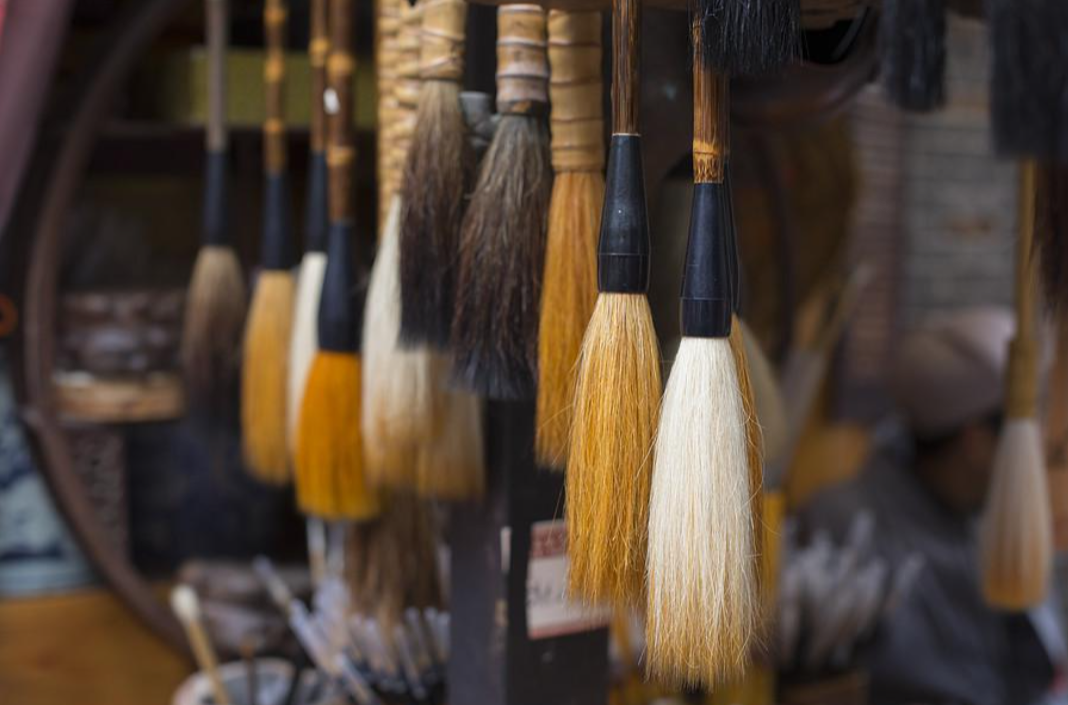
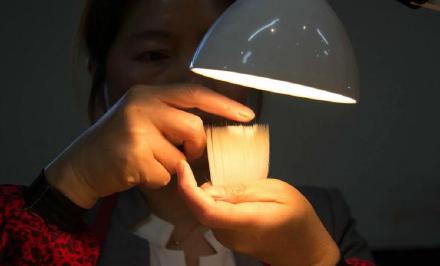
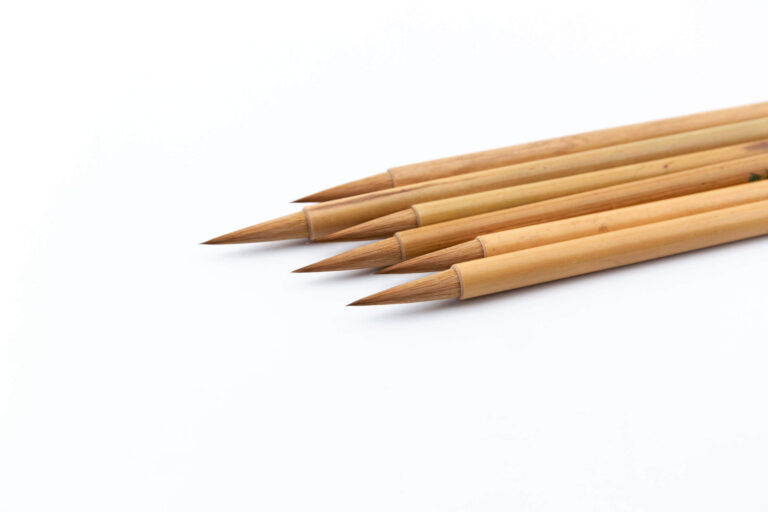
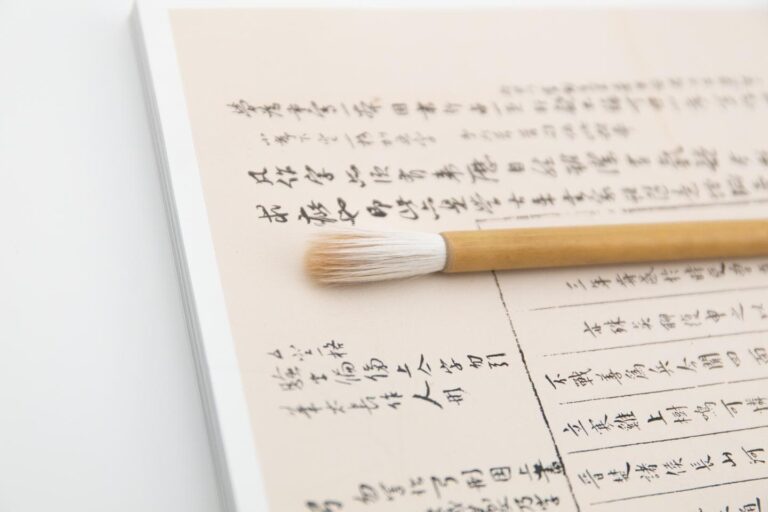
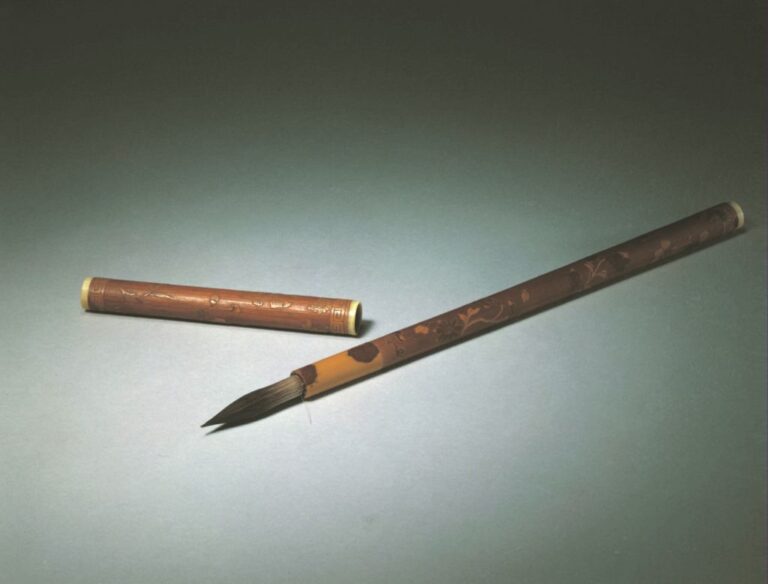

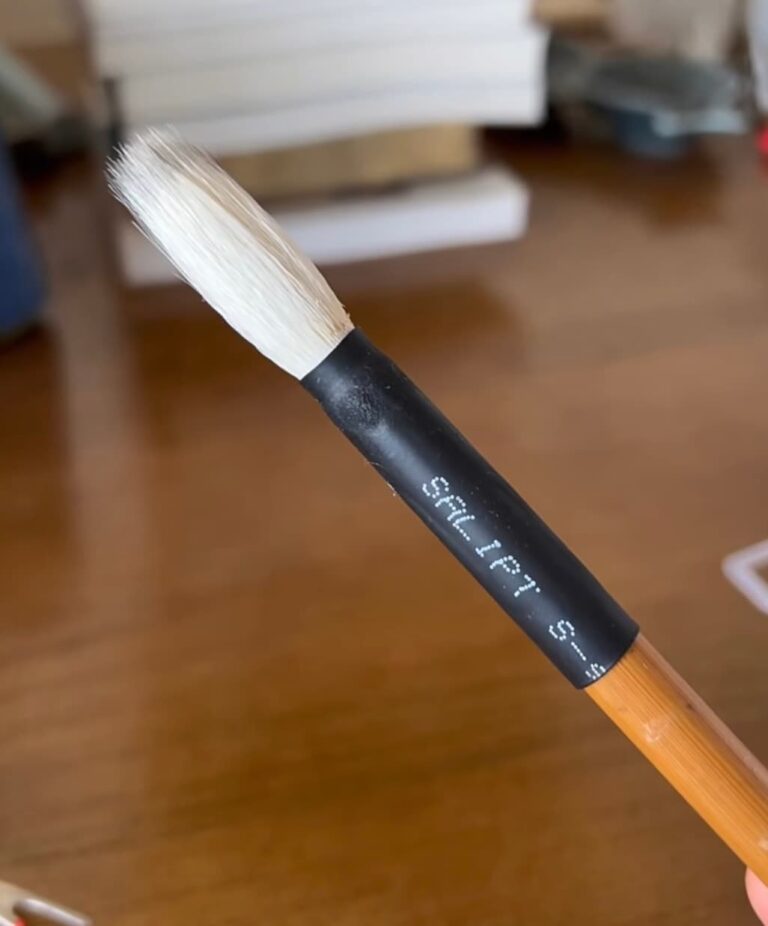
Great write-up, I am regular visitor of one?¦s site, maintain up the excellent operate, and It’s going to be a regular visitor for a lengthy time.
Thank you, you’ve given me a lot of motivation with this message!
I’m really enjoying the design and layout of your site. It’s a very easy on the eyes which makes it much more pleasant for me to come here and visit more often. Did you hire out a developer to create your theme? Exceptional work!
Thank you. Since I’m not very skilled at more complex designs either, I’m better at writing articles about calligraphy and traditional scholarly supplies.
I think this is one of the most vital info for me. And i’m glad reading your article. But wanna remark on few general things, The web site style is perfect, the articles is really great : D. Good job, cheers
Thank you. If you also enjoy Chinese calligraphy, please feel free to visit and read my articles regularly. I believe they will definitely be helpful to you.
Great web site. Lots of helpful info here. I¦m sending it to several friends ans also sharing in delicious. And naturally, thank you to your effort!
Thank you for your support. I really appreciate you sharing this website with other friends who love Chinese calligraphy.
Fantastic web site. A lot of useful info here. I’m sending it to a few friends ans also sharing in delicious. And of course, thanks for your effort!
Thank you! I checked out the Delicious website you mentioned – it’s a website for sharing delicious food. Thanks anyway!
I beloved as much as you’ll obtain performed right here. The comic strip is attractive, your authored material stylish. however, you command get got an edginess over that you wish be delivering the following. ill indubitably come further formerly once more since exactly the same just about a lot regularly inside of case you shield this increase.
Thank you! My blog mainly focuses on updating knowledge about calligraphy and traditional Chinese stationery supplies. There are no comics here.
Thanks for every other informative blog. The place else could I get that type of information written in such an ideal means? I’ve a undertaking that I’m simply now operating on, and I’ve been on the glance out for such info.
Really? Is your project about traditional Chinese culture or calligraphy?
Good write-up, I¦m normal visitor of one¦s website, maintain up the excellent operate, and It is going to be a regular visitor for a lengthy time.
thank you
Woah! I’m really loving the template/theme of this blog. It’s simple, yet effective. A lot of times it’s difficult to get that “perfect balance” between superb usability and visual appearance. I must say you’ve done a great job with this. Additionally, the blog loads extremely fast for me on Chrome. Superb Blog!
Thank you for your visit. You are also interested in Chinese calligraphy, aren’t you?